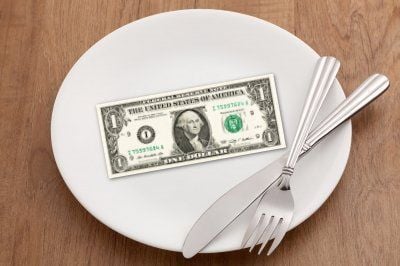Money Diet 7 Easy Ways To Reduce Your Loan Payment And Increase Your Savings
There are many ways to reduce the amount of money you send each month to your mortgage company. You just have to know where to cut the fat. Check out these seven money-diet tips to discover how you can slim down your monthly mortgage payment.
1. Refinance to a lower interest rate. Even a half-percent drop in your interest rate could save you hundreds of dollars a year. Drop a whole percentage point, say from 6% to 5% on a $150,000 mortgage for 30 years, and you’ll save more than $1,100 annually. Get a lower rate and save even more! Remember, though, you may have to pay closing costs to refinance. Make sure you’ll live in your home long enough to recoup those costs.
2. Refinance to two loans. If you took out a jumbo loan (one that is larger than local conventional loan limits in your area) when you purchased your home, you probably paid a higher rate than what was then available for conforming loans. Currently, a non-conforming jumbo loan is anything higher than $417,000 in most parts of the country. If you want to refinance above that amount, you can get around the higher jumbo rate by taking out two mortgage loans instead.
For example, say you want to refinance $500,000. You could take out a first mortgage for $400,000 at the lower conforming-loan rate. Then, you would take out a second mortgage or home equity loan for $100,000. Although the rate on the second may be higher than rates available for a jumbo, you’ll be paying that rate on a comparatively small amount of money. Overall, your rate for the entire $500,000 in loans will be lower than for a jumbo. That will mean a lower total monthly payment.
3. Double up on a small down payment. Refinancing to two loans also makes sense if you put a small down payment on your home. If you paid just 10% down on a $150,000 property, for example, you’re probably paying a private mortgage insurance (PMI) premium with your monthly mortgage payment. Once you have 20% equity in your home, you can drop that payment (as we’ll discuss later). But with less than 20%, it might pay to refinance to a 75/15 mortgage. Under this scenario, you would take out a first trust for 75% of the home’s value and a second trust for 15% of its value. With neither loan showing less than 20% equity in the home, PMI won’t be required.
4. Review your ARM calculations. Industry experts say consumers can lose money to calculation errors lenders sometimes make when re-computing adjustable-rate mortgage payments as they change year to year. Dust off your closing papers and look up the current rate to find out what you’re supposed to be paying according to the adjustments and caps stipulated for your loan. If you find a mistake in your favor, contact your mortgage company to have your payment changed to the lower amount.
5. Drop Private Mortgage Insurance (PMI). If you bought your home with less than a 20% down payment, you probably have private mortgage insurance. PMI can cost hundreds of dollars monthly on some loans. The Homeowners Protection Act of 1998 says your lender must automatically cancel PMI when your equity reaches 22% on the loan pay-down schedule. But you can also drop your PMI once your equity reaches 20% through market appreciation and payments. If your home has been appreciating, and you think you owe less than 80% of its current value, contact your lender. Chances are you’ll have to pay for an appraisal (about $300 to $400) to prove your home’s current worth. But after that, you’ll see monthly savings in a lower mortgage payment without the PMI premium.
6. Get a longer term. Although this method may not suit everyone, if you need to increase cash flow by reducing your monthly payment, you could extend the term of your current loan. For example, if your balance is down to $100,000 on a $150,000 30-year mortgage that you took out 18 years ago at 7.5% interest, your monthly principal/interest payment would be $1,048.82. If you refinanced the $100,000 12-year balance with a 30-year loan at even the same interest rate, the longer term would lower your principal/interest payment to $699.21. That’s a big drop in payment, but it also means you’ll be paying on your home 12 years longer than before refinancing. And, of course, your total interest expense on the purchase of that home will be much higher.
7. Correct an outdated tax assessment. You’re probably paying a portion of your annual real estate taxes with your monthly payment to your mortgage holder. Have you checked your tax assessment to make sure you’re not paying too much? The taxing authority could be calculating taxes on your house with incorrect information, e.g., counting an extra bedroom, bathroom or finished basement that you don’t actually have. This would increase your tax bill and your monthly payment. Keep track of your tax assessment and challenge it if it doesn’t reflect actual property values in your area.



